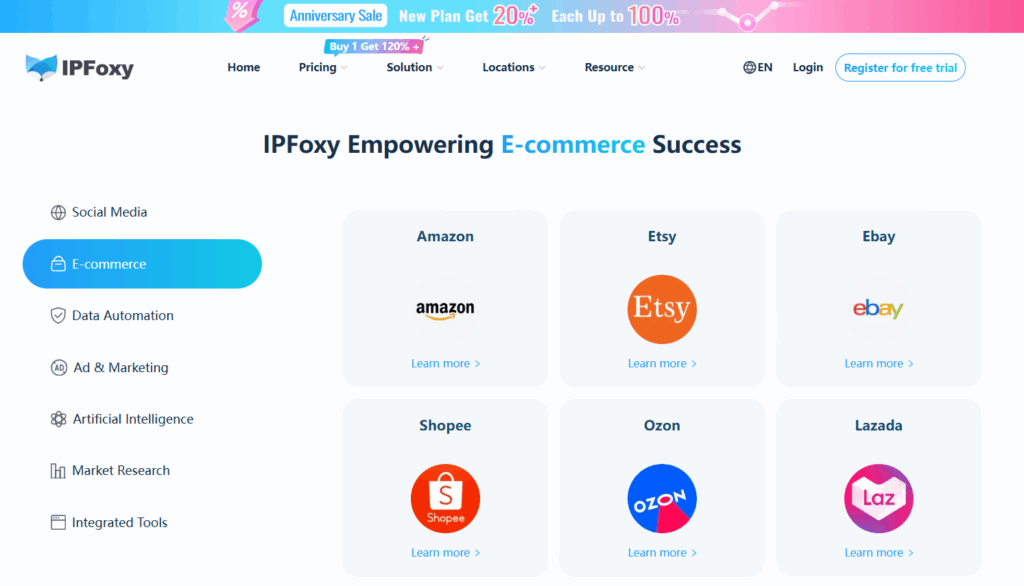Etsy is a globally renowned e-commerce platform for unique goods and handicrafts. With its labels of “niche, original, personalized,” it has become a goldmine for sellers. However, many sellers face the same frustration: after finally setting up their store, investing effort in listing products and driving traffic, their shop is soon suspended, and sometimes even their funds are frozen.
Getting suspended not only means previous efforts go to waste, but also risks breaking the cash flow. How strict is Etsy’s risk control? Why are suspensions so frequent? How can sellers avoid pitfalls to achieve long-term stable operations? This article systematically breaks down the reasons for suspensions and survival strategies, helping sellers reduce risks.
Contents
I. Reasons Why Etsy Suspends Store
1. Product Violations and Infringements
- High infringement risk: Selling goods with brand logos or involving copyrights (e.g., replicas, secondary-processed branded merchandise) is highly likely to be reported or detected by the platform.
- Prohibited categories: Etsy bans hazardous items, counterfeits, medical products, adult/sensitive goods, etc. Hitting these red lines leads to direct suspension.
- Keyword violations: Product titles or descriptions containing sensitive words like “Nike, Disney, LV” will also be flagged as infringement.
Etsy’s review is stricter than many expect—it doesn’t only rely on buyer reports, but also actively identifies keywords and images.
2. Account Association
- Logging into multiple accounts on the same device: For example, using one computer to manage 2–3 shops with identical browser fingerprints will be deemed the same operator. Switching accounts without fully cleaning browser data also exposes shared information.
- Same IP address: Multiple accounts sharing one IP are easily judged as “batch operations.”
Etsy’s risk control is similar to Amazon’s, with strong multi-account detection. A small mistake can trigger permanent bans.
3. Payment and Identity Issues
- KYC failure: Submitted ID, billing address, and registration details don’t match, leading to rejection.
- Abnormal payout accounts: Linked PayPal/bank card doesn’t match account info, or risky third-party payout tools are used.
- Frequent changes: Constantly altering payout details also attracts scrutiny.
4. Poor Buyer Experience and Performance Metrics
- Delayed shipping: Failing to ship within promised time easily triggers complaints.
- High return/refund rate: Frequent refund requests signal product or service issues.
- Low ratings: Too many ratings below 4 stars lower store weight and may cause suspension.
5. Risky Behaviors
- Mass listings: Uploading dozens or hundreds of products in a short time raises suspicion of “bulk listing mode.”
- Frequent edits: Constantly changing prices, titles, or images triggers alerts.
- Abnormal traffic: Using low-quality proxies or frequently switching IPs causes suspicious signals.

II. Pitfall Avoidance and Survival Strategies
1. Registration Phase
- Prepare documents: Have valid ID, billing address, and payout details ready.
- Maintain consistency: Registration info, payment details, and payout accounts must align—avoid mixing mismatched data.
- Don’t repeatedly fail: Too many failed registration attempts get logged, lowering approval chances.
2. IP and Environment Isolation
One of the core reasons for Etsy suspensions is account association. To reduce risks, sellers must ensure isolation at both the IP and device environment levels.
- Device environment isolation
Etsy collects device fingerprinting data (browser version, fonts, hardware parameters, cookies, etc.). If multiple accounts operate under the same device environment, the system quickly flags them as the same seller.
Tip: Use a fingerprint browser to generate an independent environment for each account and avoid overlapping fingerprints. - IP isolation
Etsy logs every login IP. If multiple accounts sign in under the same IP, they are suspected of batch operations. Therefore, stable, genuine proxy IPs are needed to simulate real buyer networks. Here we recommend IPFoxy high-quality proxy IPs, which provide residential native IPs that closely mimic real buyer environments, making it harder to trigger risk control. They integrate seamlessly with fingerprint browsers to achieve a “one account, one environment” setup. Sellers can first claim IPFoxy’s free trial to test network stability before applying it at scale across account matrices.

3. Compliance in Product Selection and Operations
- Check rules before listing: Avoid infringing or sensitive products.
- Natural listing pace: Add products gradually each day, mimicking normal seller behavior.
- Gradual price adjustments: Avoid frequent, drastic changes.
- Optimize content: Use original photos and descriptions—don’t copy or duplicate listings.
4. Improving Buyer Experience
- Ensure timely shipping: Choose reliable logistics to reduce delays.
- Fast customer service: Respond quickly to inquiries and complaints.
- Boost positive reviews: Provide quality service and encourage buyers to leave positive feedback.
5. Store Health Monitoring
- Regularly track metrics: Refund rate, dispute rate, order completion rate.
- Act on risks promptly: Improve shipping times, refine product descriptions, etc.
- Avoid manipulative behavior: Fake orders or transactions have zero tolerance under Etsy’s risk control.
Conclusion
The essence behind Etsy’s frequent suspensions lies in protecting buyer experience and preventing violations. The opportunities on Etsy remain vast—but only if sellers combine compliance with technical defenses against risk control. By avoiding the pitfalls above and implementing proper environment isolation, sellers can truly “survive long-term.”
